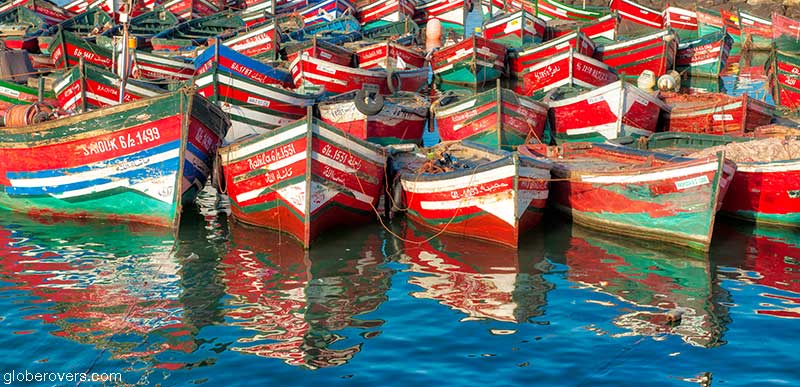
The Atlantic coastline of Morocco stretches all the way from Tangier in the far north near Spain, all the way south to the border with Western Sahara – a distance of almost 1,500 km. I travelled along this coast from Essaouira north to Rabat (470 km). In this post, I cover the coastline from Essaouira to El Jadida (270 km).
Why Travel from Essaouira to El Jadida?
- The low-down: Morocco’s Atlantic coast is home to several historic towns with a rich history. Old medinas with imposing gates and thick walls encircling bustling medinas. The rocky coastline and sandy beaches are worth visiting for a few days.
- The brightest highlight: The old walled cities of Essaouira, Safi and El Jadida should not be missed. Stay a few days in each.
- Intrepid destination: In high season, the coastline can get very busy with locals and international visitors. Many places are void of tourists in the off-season.
- Globerovers score (10 is highest): I really enjoyed the old cities as well as the beaches. This area should not be missed when you visit Morocco. I’ll score this area 8.8 out of 10.
Morocco’s Atlantic Coastline is known for its walled medina’s and long sandy beaches
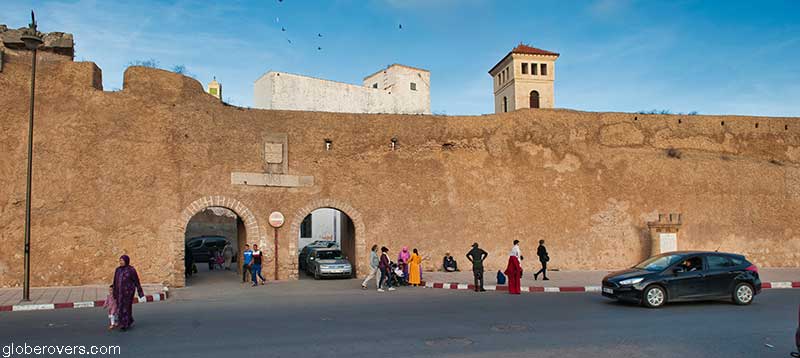
Table of Contents
Essaouira – Morocco’s Atlantic Coast
Located directly west of Marrakech, the town of Essaouira is easily reached by public bus. As you approach Essaouira you will feel the light cool coastal breeze, referred to as the alizee, or taros in the local Berber language. The alizee blows for much of the year so the wide and long beaches here are more suitable for sandblasting than for sun tanning. Known as the “Wind City of Africa”, the strong winds keep away the hordes of beach lovers from Europe but attract plenty of windsurfers and kitesurfers between April and November. The wide beach is ideal for ball games, horse or camel riding, or even biking.
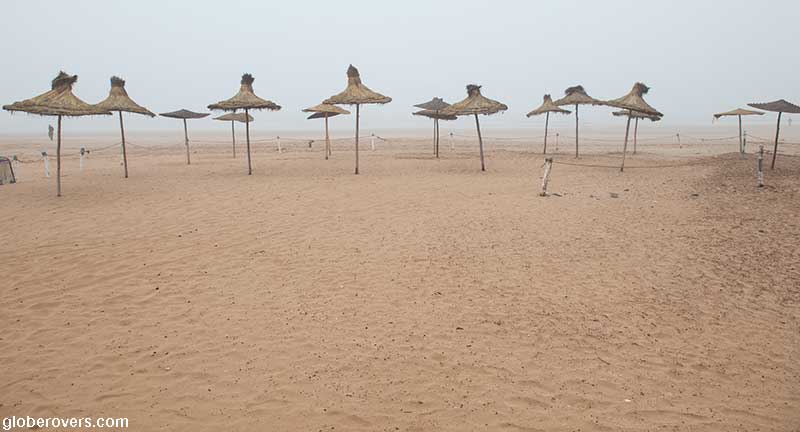
Essaouira shows evidence of being a typical late 18th-century North African fortified town
Essaouira gets its fair share of local and international tourists during spring and autumn when they come to wander through the palm-lined avenues and fortified medina’s spice-scented lanes, filled with beautiful Moroccan arts and crafts.
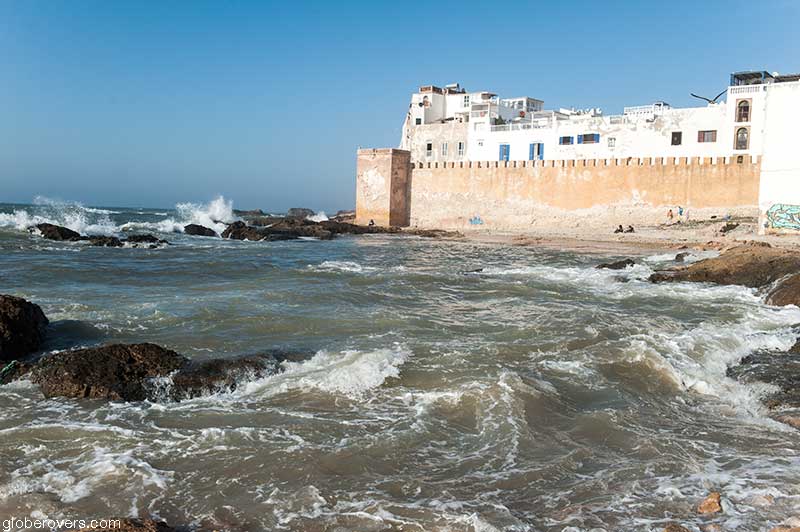

Listed as a UNESCO World Heritage Site, the well-preserved 18th-century medina of Essaouira is an exceptional example of a late-18th-century North African fortified town. It once was a small fishing village known as “Mogador”, a word that originates from the Phoenician word “Migdol” meaning a “small fortress”.
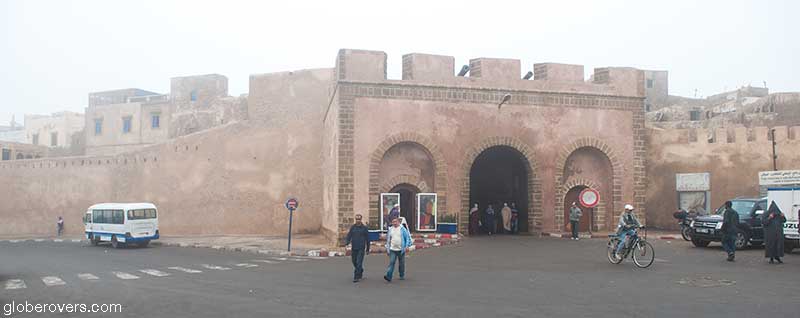
Since the early 16th century, it has been an important trading seaport, linking the trade routes from the Saharan Desert with the lucrative European markets. This rich and long history is evident as you wander through alleyways lined by tall whitewashed buildings. Es-Saouira means “beautifully designed”, as the early French architects designed it so well that, unlike most other Moroccan medinas, this medina isn’t like entering a maze, so you are unlikely to get lost easily.
In the medina, near the harbour, is the large Moulay El Hassan pedestrianised square, surrounded by many cosy bars and restaurants. Either sit outside at street level or at one of the rooftop cafes and you will be in an excellent position to do all-day people-watching.
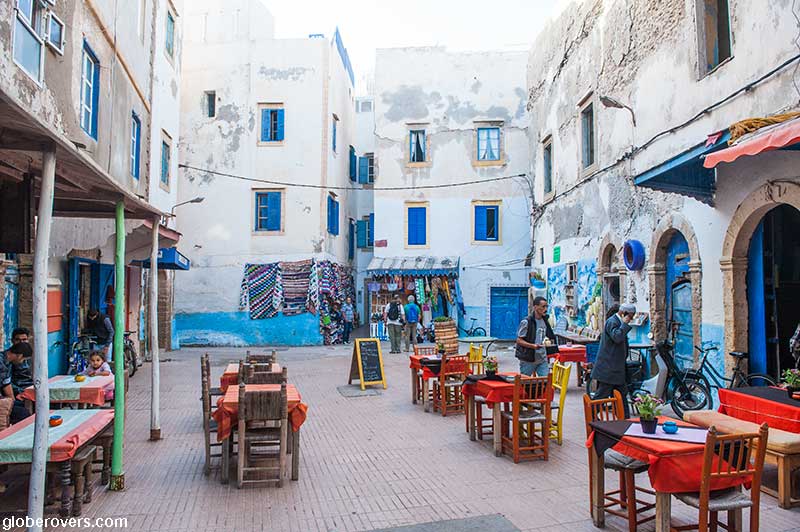
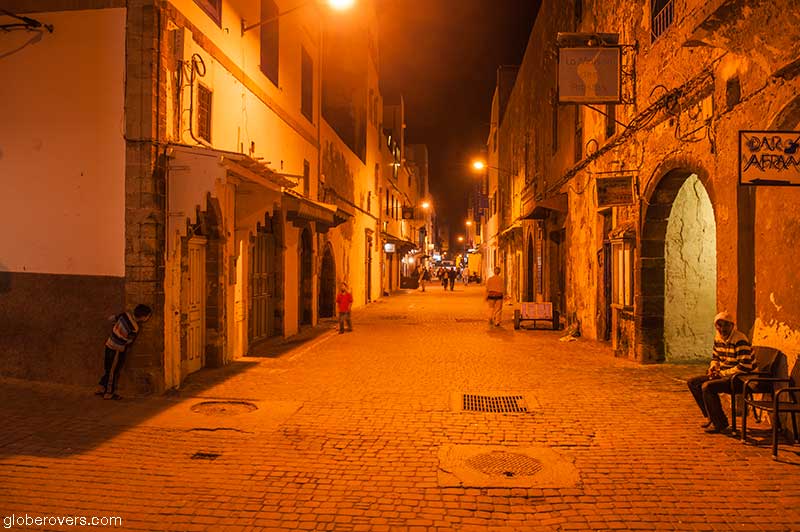
Take a leisurely walk along the old ramparts of the fortress of Scala del Mar to have great views over the city and the ocean. These defensive walls between the ocean and the medina, as well as the medina and kasbah area, were built in the 1760s on the command of Mohammed III who directed French engineer, Théodore Cornut, and several other European architects such as the English and Genoese engineers.
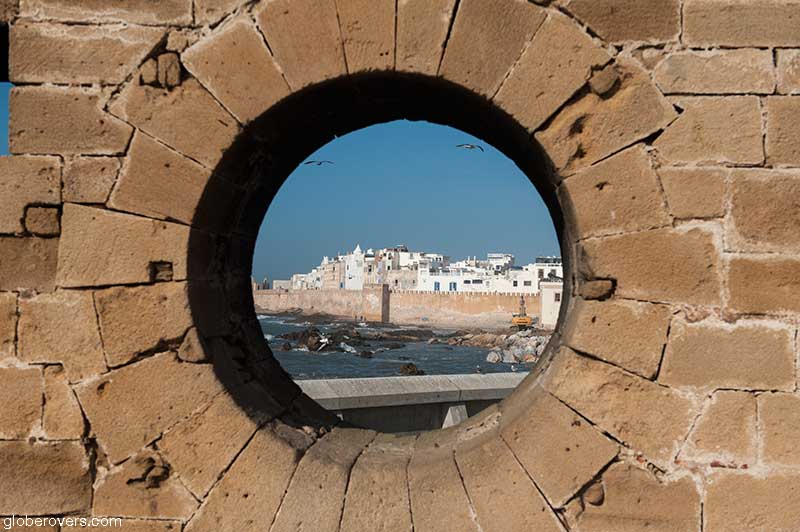
There are great views from the ramparts, especially at sunset when you can watch as the sun sinks down behind the sea. At sunset, the photo opportunities are endless from the ramparts with the defensive cannons in the foreground and thousands of seagulls hovering around with the hope of scavenging fish morsels from the fishermen. A surreal scene!


A favourite pastime of visitors to Essaouira is to wander around the harbour and watch the fishing nets being mended and traditional boats being painted at the old atmospheric port.
At the end of the day, the fishermen auction off their catch. Watch the bargaining going back and forth while the seagulls and stray cats all try to get their piece of the pie!
Buy some fresh seafood for yourself directly from the fishermen’s tables and take it back to your guesthouse for preparation.
Look out for sardines as Morocco is the largest canned sardine exporter in the world. Mussels are also good and are regularly served up in tajines (stews).
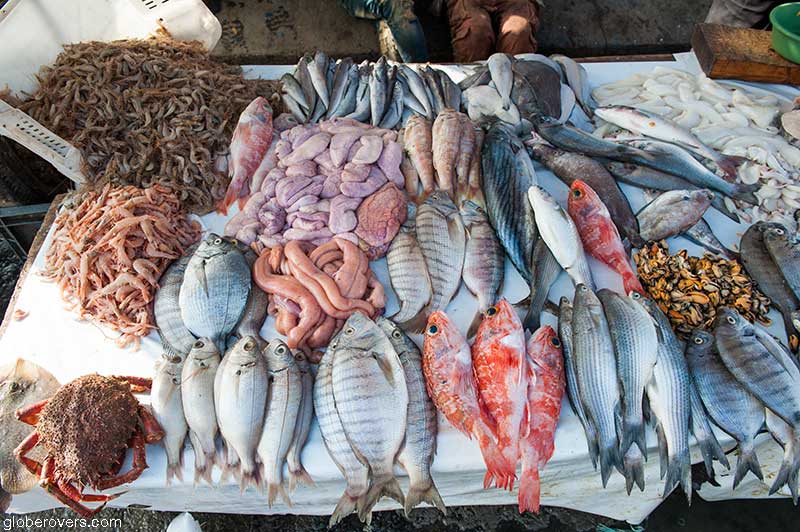
Essaouira is the heartland of Gnawa music which originated in West African states such as Senegal, Sudan and Ghana, and was brought to Morocco by the slaves. For about three days in May or June every year, Essaouira transforms into a music festival where the sounds of krakebs (iron castanets), loutar or gimbri (a three- or four-stringed lute), aloun (percussion instrument) and vocals are mixed with an atmosphere of spirituality, rhythm and rather wild dancing – escalating into a crescendo of hypnotic trance.
During this festival, the streets become alive with bustling markets, street performances, and food stalls in an explosion of vibrancy and colour. The Essaouira Gnawa music festival is a carnival-like no other and not to be missed!
Essaouira also offers the Festival des Alizés in April for classical music and the Festival des Andalousies Atlantiques in October for Arab and Andalusian (southern Spain) music.
For a cosy stay south of the medina, contact Nadia and Thierry at Riad Salmiya Guesthouse (riadsalmiya@yahoo.com). A lovely guesthouse hosted by a very friendly French couple.
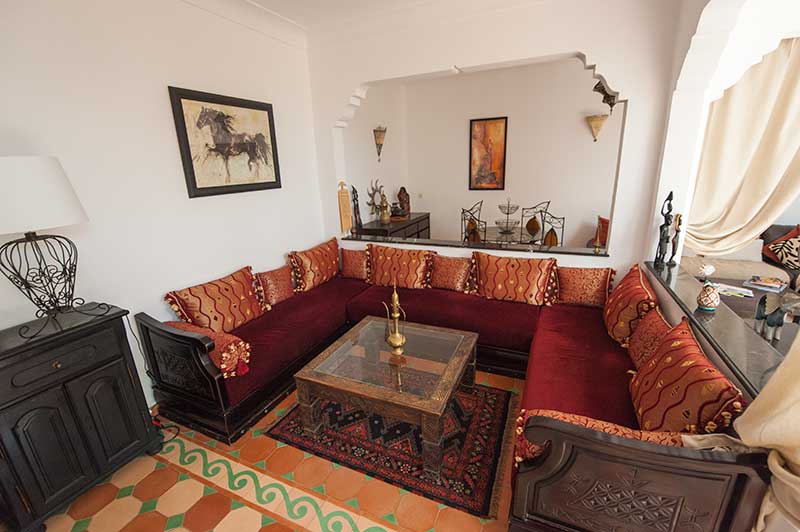
Safi – Morocco’s Atlantic Coast
North along the coast just 123 km from Essaouira, lies the interesting town of Safi. While Safi may not be considered one of the biggest tourist attractions of Morocco, it is one of those places where you can discover all that the road-less-travelled has to offer.
The old part of Safi is dominated by the medina with its massive imposing gates. This is a great area for strolling between ceramic shops, carpet vendors, and several restaurants serving great Moroccan cuisines.

Located about 500 metres from the sea stands the Portuguese built Kechla that served as a prison until 1990. It is now home to a rather dull exhibit of local ceramics by local ceramic producers.
The oceanfront Dar Al Bahar (meaning “the castle by the sea”) is another fortress built by the Portuguese and had a panoramic view of the ocean and the nearby medina.
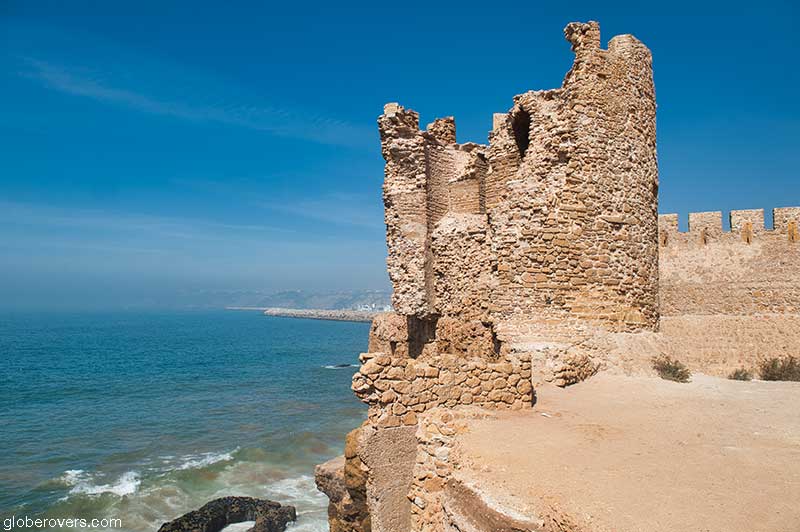
The potters’ quarter, known as “Collines des Potiers” is located outside of Safi’s old medina walls in the hill above the city. Here you can see potters creating ceramics as well as hand-made crafts like tiles and mosaics.
The poorly conserved Cathedrale Portugaise is interesting to visit, though offers little to see. Only the ruins of what looks like a choir galley and vaulted hall are still standing.
Continue further north along the coastal road for about 60 km to reach the small town of Oualidia. With the Atlantic Ocean on the west and a long salty intercoastal lagoon on the east, Oualidia is known for its flamingos, oyster farms, and fertile vegetable farms. Life here is tranquil and beaches are void of tourists and are naturally beautiful. Water activities abound in Qualidia.
Wavesurfing, windsurfing, kitesurfing, canoes, kayaks and chartered fishing boats are all available to visitors. King Mohammed V built his summer palace here in the 1940s, decreeing Morocco’s first royal beach. Oualidia offers some great accommodation. At the top end are La Sultana Oualidia, Villa Sur La Plage, and the Chateau Eden El Rouh & Spa. Accommodation at a lower budget includes the Sunset’s House, and Oualidia Surf House.

From Oualidia the coastal road continues north for 76 km to the beaches of Sidi Bouzid, a few kilometres south of El Jadida. The water and beaches here are very clean, and almost pristine. Walk on the long boardwalk if you get tired of the soft sand.
El Jadida – Morocco’s Atlantic Coast
While El Jadida is free of all but a few tourists for most of the year, in July and August the town transforms into a bustling holiday haven popular with Moroccan families mainly from Casablanca and Rabat. Their most compelling reason to visit is the UNESCO-listed 16th-century Cité Portugaise at the Fortress of Mazagan, the Grand Mosque, Church of the Assumption, and the Portuguese Cistern.
The old city of El Jadida has not changed much over centuries
About 16 km north of the old city, on a good stretch of beach, is the recently opened large Mazagan Beach & Golf Resort, which offers a golf course designed by South African Gary Player, as well as a casino, nightclub, restaurants and spas, where a luxury room varies from US$300 to almost $8,000 per night.
El Jadida’s 16th-century city, Cité Portugaise, previously known as Mazagan, is small and in a derelict state. It seems like time has been standing still here while mass tourism, or any tourism outside July and August, have largely overlooked this old city. Enjoy it now before the bulldozers and whitewash painters move in, followed by busloads of tourists.
Today’s Cité Portugaise is very much a residential place, void of tourist shops and restaurants. In fact, there are hardly any restaurants within the city walls, so best head out to the new town for drinking and dining.
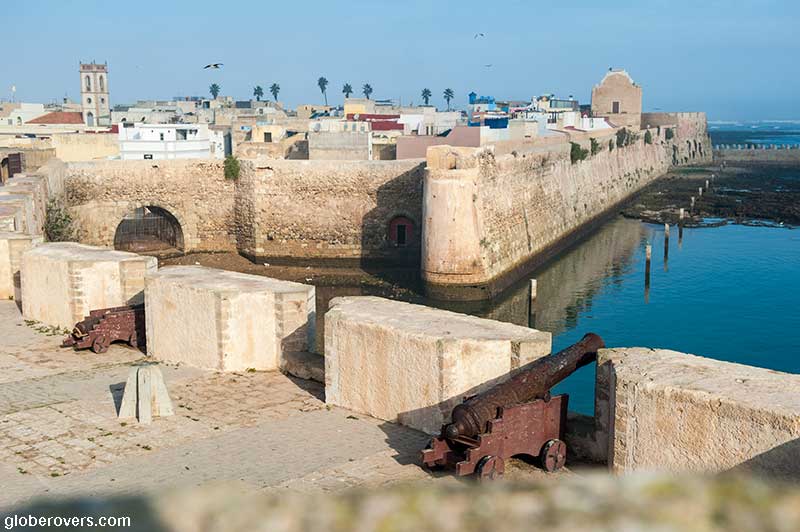
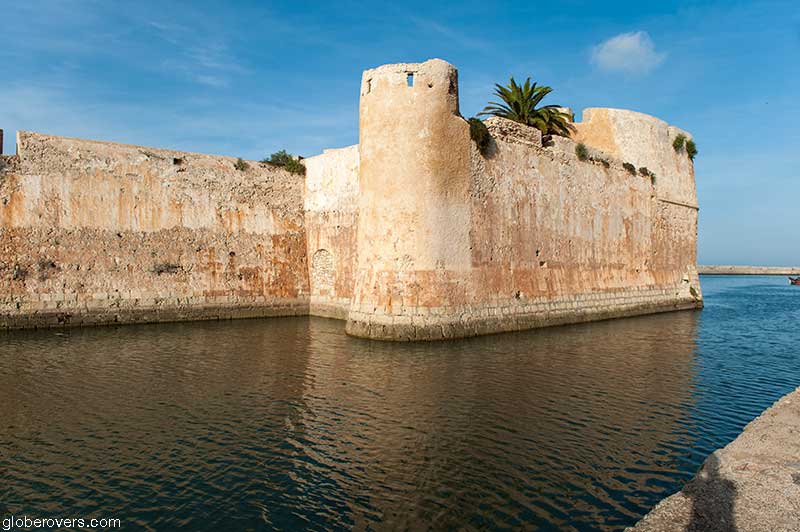
Walking around the Cité Portugaise is an interesting experience. Locals are friendly and kids are curious to see foreign faces. If you want to experience the old city, stay in one of the handful of riads and homestays.
The harbour is colourful with its small red and green boats.
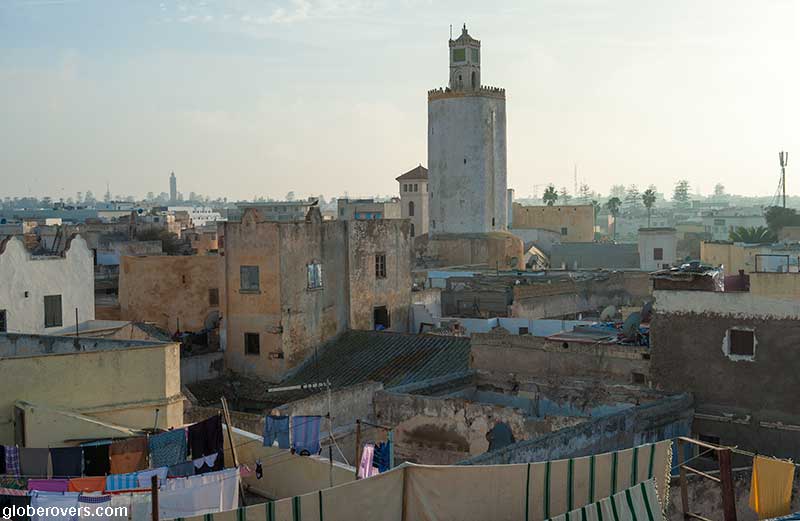
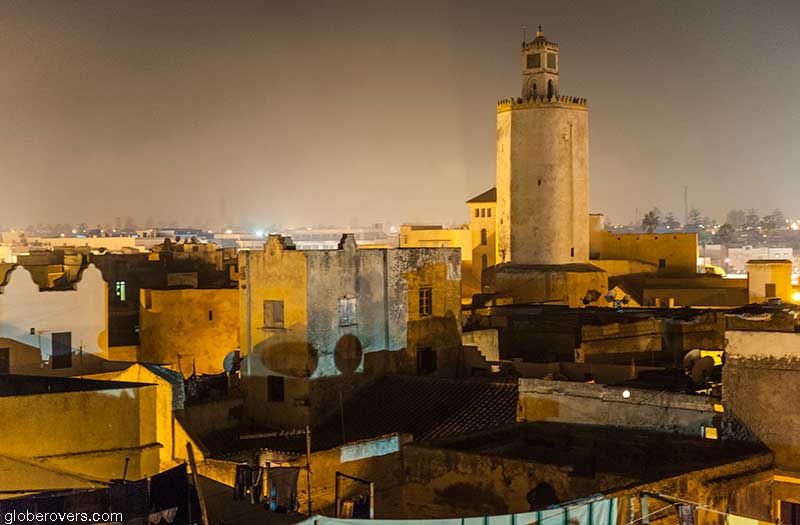
fortified city walls of Mazagan, El Jadida
☛ Read more: 7 Unforgettable Morocco Travel Adventures
☛ Read more: The Gorges south of High Atlas Mountains
☛ Read more: Marrakech to Fint Oasis
☛ Read more: 9 Great Travel Experiences in Morocco

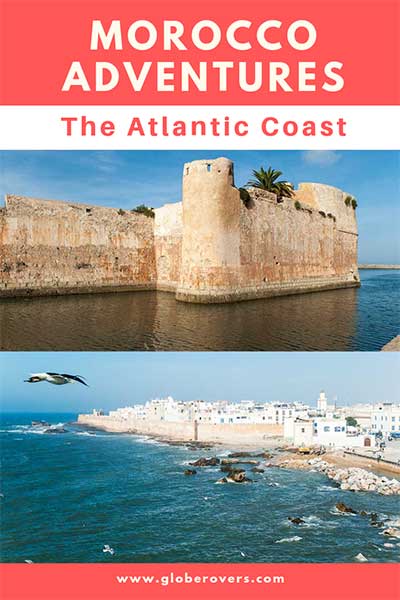
Further reading
- Coming soon

Blog post and photos by Peter who has been travelling almost full-time since 2005 and has been to over 122 countries. He visited several countries, such as Japan, more than 20 times. Peter is Editor-in-Chief and Publisher of GlobeRovers Magazine, an independent travel magazine focused on intrepid destinations.
